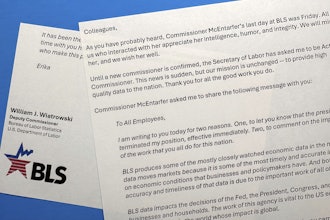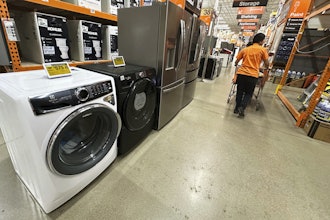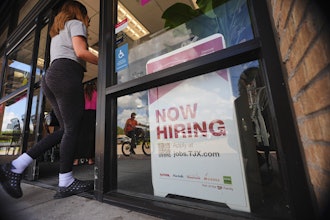Industrial Distribution sat down with Prentis Wilson, VP, Amazon Business, and Petra Schindler-Carter, Director and GM, Amazon Business Marketplace, for an exclusive interview on how AmazonSupply morphed into a brand new marketplace for B2B buyers and sellers.
Prentice Wilson (PW): We’ve been serving business customers for a long time. Even from the launch of Amazon Supply where we were focused heavily on industrial and MRO supplies in the beginning… it was a launch we did at 500,000 and quickly ramped up to well over 2 million products. We continue to expand our functionality there by spending time with our customers, and manufacturers, and learning. We ramped our customer base to millions of business customers who are spending billions of dollars now with us, between Amazon.com and AmazonSupply. But we continued to listen, and one of the things we hear a lot from our business customers is, they really want the Amazon shopping experience when buying for work. And with Amazon Business, that’s exactly what we’re providing.
Amazon Business is a marketplace that’s dedicated to serving business customers of all sizes. The interesting thing about Amazon Business is that now business customers have access to hundreds of millions of products. It’s everything from the artwork for their walls to the industrial equipment they need to run their factories, to lab or office supplies – you name it. It’s a broad range. The other interesting thing is, because it’s a marketplace, we’ve opened it up to sellers that specialize in serving businesses. So our business customers now get access to millions of the broad sellers that are available on Amazon, but they also get access to sellers that specifically focus on businesses. And a lot of sellers that sell only to business customers; and they also have products that are business-only items, or even pricing that is business-only pricing, or quantity offers.
When a business customer creates an account, they get access to a lot of features. It’s free, and it’s very easy for them to set up – they just provide some business credentials and, once the verification is done, they get access to all those tools. They also get free 2-day shipping on orders of $49 or more, on tens of millions of items. They then get access to the broad marketplace of items, including the sellers that sell to business customers.
ID: We’re really interested in how industrial suppliers can see this as an opportunity rather than competition. Can you elaborate? Can you also tell us what kind of fees the sellers will be paying?
Petra Schindler-Carter (PS): We’ve operated a marketplace on the consumer side since 2000, and it’s now an important part of the overall Amazon business. For example, in 2014 alone, more than 2 million sellers shipped more than 2 billion units on Amazon. Those are sellers of all sizes, across all categories. They’ve leveraged Amazon as an incremental selling channel for them. They’re taking advantage of our tools; it’s a mature marketplace, a familiar buying experience that customers love. It’s easy to use, and the significance of the launch of Amazon Business – for the marketplace – is that sellers and distributors can now play in this space, when they were not able to do that on AmazonSupply.
There are a number of distributors who, until (launch day), may not have thought of Amazon as an opportunity for them to reach new customers, or grow their business. From a seller’s perspective, it’s all about the opportunity to grow sales and to reach millions of business customers. Some of those business customers were already here, so we know millions of customers already spent billions of dollars on business-related items. And now we have a tailored buying experience around that.
It should be as easy to sell on Amazon as it is to buy on Amazon. So joining the Amazon Business program is free for sellers. There is a nominal subscription fee for the marketplace, but really the business arrangement is one that incentivizes sales volume. So Amazon gets paid when the sellers have a transaction. There is a revenue share arrangement where a commission is paid to Amazon on a per-transaction basis. That aligns our interests; Amazon gets paid when the seller actually reaches the customer. And there is no listing fee. You only pay when you have a sale.
With the launch of Amazon Business, we have rolled out some new capabilities that sellers have told us are critical, in order to sell to other businesses. Those features are really around full control over pricing and who gets to buy what from whom. So think of the selection in any professional area, where a distributor may want or need to restrict purchases to only business customers. We now have the capability where the seller can set listings as business-only. They can also declare distinct pricing. They don’t have to, but they can create a different business price versus a consumer price.
We often hear from sellers that they want to create quantity discounts to really incentivize volume purchases. With the launch of Amazon Business, we now have those features available. Those are some game changers, even for some of our existing sellers who are now thinking about joining the Amazon Business program. A key part of the success of the marketplace is our sellers’ ability to take advantage of our fulfillment offering. We have a program called ‘Fulfillment by Amazon,’ where Amazon can ship the merchandise on behalf of the seller to the end consumer. That program has been a key driver of growth for many sellers who have struggled to keep up with shipping or direct-to-consumer shipping and are not able, through the benefit of the program, to reach a broader audience nationwide.
We have some great early success stories. We have a seller called G7 Power. They’re a small, veteran-owned business out of Reno, NV, and they carry LED lighting equipment. They’re telling us that now being part of a marketplace – and using Fulfillment by Amazon – they’re reaching a more diverse set of customers nationwide. They’re very excited to grow their business with us. They’re also an example of a seller who might have different ownership credentials – they’re veteran owned. Other sellers might have quality credentials – like ISO 9001. And they’re able to display them on the website, so a buying customer can make an informed decision to buy from them. It’s all about control for the seller to tell their story, advertise their product, or make it easier for their customer to locate their product, by part number, or whatever is appropriate for their industry, on the website. It is about growing sales.
At the end of the day, it is not about competition. The very nature of our marketplace is to enable sales growth, and to allow these sellers to get in front of both new and existing customers nationwide, and make sure they’re staying on top of the buying trends that customers are looking for, which is more and more to buy online.
PW: When we hear from our customers, one of the biggest things that they really like is they get broad selection, with a broad number of sellers all within one location. Enterprise customers, for example, connect the Amazon Business marketplace into their procurement systems. And so, as their employees go through the punch-out process, they go to the marketplace and they like that they can go to one location and now discover a broad selection, including a broad set of sellers. So now these sellers that are on our marketplace get access to those customers. As customers set up multi-user accounts and drive their employees to do more purchasing on Amazon Business, the sellers in this marketplace are right in front of these customers, so they have access to all of that customer spend.
ID: How would you address concerns from sellers of commodity type products that the easy side-by-side comparisons will contribute to price erosion?
PS: My response to that would be – customers are savvy. They’re going to want to price compare. They do that today; they do it online, broadly. Amazon is an open marketplace. It is one avenue for customers to look for competitive pricing, but we look at it as – sellers are competing with the rest of the industry and the rest of the open marketplace, and those dynamics are really not different.
ID: The press release on the new launch mentions suppliers offering ‘the service and performance buyers have come to expect.’ Does this mean Amazon will be vetting suppliers? How will this service and performance be portrayed on your website?
PS: It’s critical for us that our buying customers have a great experience. That’s what they expect from Amazon, so in order to succeed as a seller in the marketplace, we expect that you keep your promise in terms of delivery and shipping, and provide a great experience. And we’ll make sure that our customers get that experience. For business sellers, that means we’re very transparent about what we expect – and we’ll share those requirements. Most importantly, we’ll give them the tools that will help them to meet those requirements. And we think that’s another differentiation with our mature platform. We’ve had more than 2 million sellers selling more than 2 billion units last year. Those are mature systems. We have the fulfillment capabilities as well, so it’s an opportunity for every seller to meet and exceed those high standards. We’re very willing and happy to help them with that.
ID: Does Amazon Business have plans to woo manufacturing customers from their more traditional procurement channels?
PW: Absolutely. Amazon’s business is purpose-built for business customers and so we’re continuing to innovate on their behalf. These companies are buying from us today. We’ll frequently have multinational companies come in and say ‘we’re spending millions of dollars with you today, and we want to expand and learn about the features and continue to grow.’ So that’s what we’ve been looking to do, is to make it easy for them to do that. It’s also easy for an individual buyer in a company to create an account and quickly buy the supplies that they need. But the nice thing about Amazon Business is, it’s easy whether you’re a small business or a large enterprise. And the account is free, and we’ve worked hard to make it really easy to do set up.
ID: Is Amazon Business done? How do you plan to build out the features?
PW: I would say, as excited as we are about Amazon Business... I am even more excited as I look out to the future for our opportunities to innovate. There are a variety of areas where we think we can add a lot of value for our business customers, and we’re very much focused on innovating on their behalf. I would expect to see a number of innovations being made available for our business customers and our sellers in the marketplace – over time.
PS: We’re super excited to see the inbound reactions we’re getting from suppliers who are interested in selling on Amazon. It’s a very diverse set – they run the gamut from industries and subcategories, from raw materials to cutting tools, electrical supplies, commercial marine products… you name it. We’re surprised and delighted to see such a broad range. We listen to their feedback and we’ll learn a lot from them. We’re committed to innovate by adding new features to allow these sellers to drive their sales, and we’d love to see a lot more sellers come and join the platform.






















